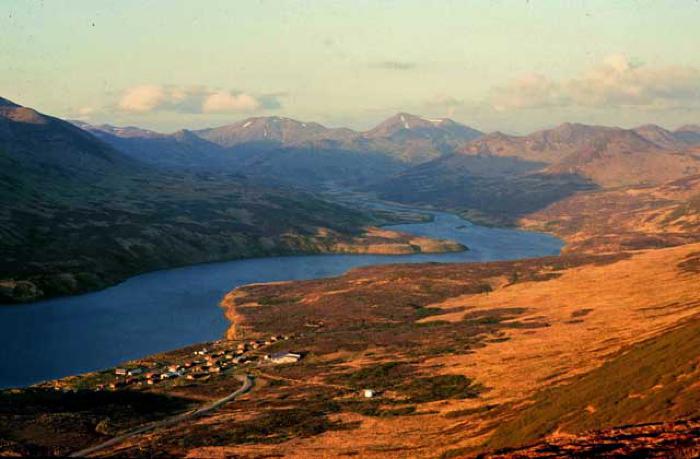Karluk — Kal’ut, Kal’uq

The Alutiiq village of Karluk lies on the southwestern shore of Kodiak Island. Tucked between treeless rolling hills, the community rests on the banks of the Karluk River. This is the longest fresh watercourse in the archipelago and once was the region’s most productive salmon stream. All five varieties of Pacific salmon still spawn in huge quantities in the Karluk, with fish continuously available from late May until late October. The river also supports steelhead trout.
Today less than forty people live in Karluk. This is perhaps the lowest population in a millennium or longer. Archaeological data indicate that the area has been intensively occupied for at least five thousand years. The fish resources that supported Alutiiq communities also drew Russian and American colonists to this corner of the archipelago. In 1786, Russian traders established a workstation (artel) with salmon drying racks and later a saltery on the north side of Karluk Lagoon. Here, fish were processed for shipment to other Russian posts. In 1878, the Karluk Packing Company built Kodiak’s first cannery on Karluk spit, which was followed quickly by many others. By the later 1800s, millions of salmon were processed annually at Karluk. This intensive fishing seriously depleted salmon stocks. Efforts to bolster the population with a hatchery failed, and the canneries were forced to consolidate. The surviving cannery eventually moved to Larsen Bay.
With careful management, Karluk’s salmon runs rallied in the twentieth century. Although the fish population has never returned to historically observed levels, the area still supports huge fish populations. Village residents continue to make a living from these runs, both as subsistence fishermen and as guides to the many sport fishermen who visit each year.
